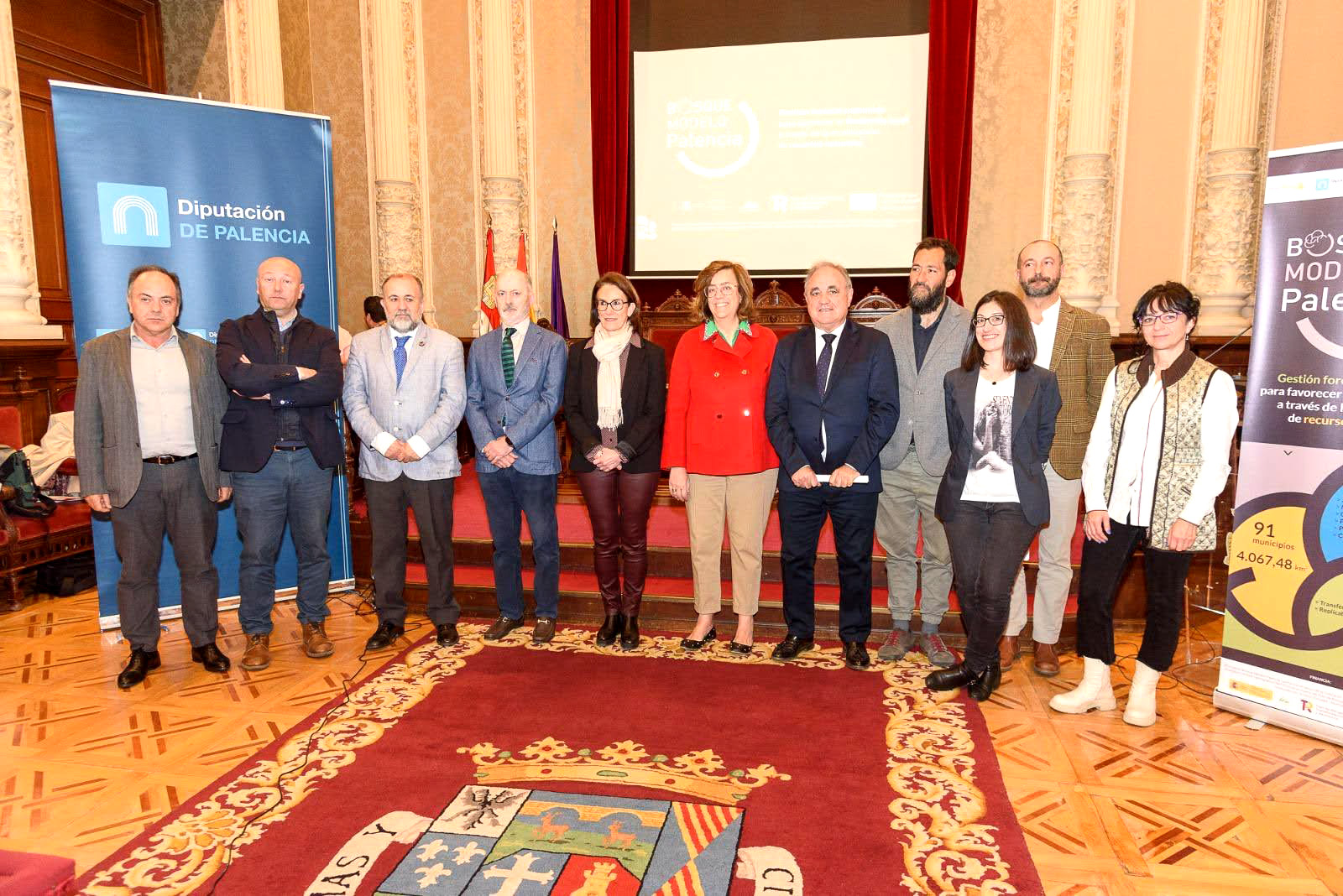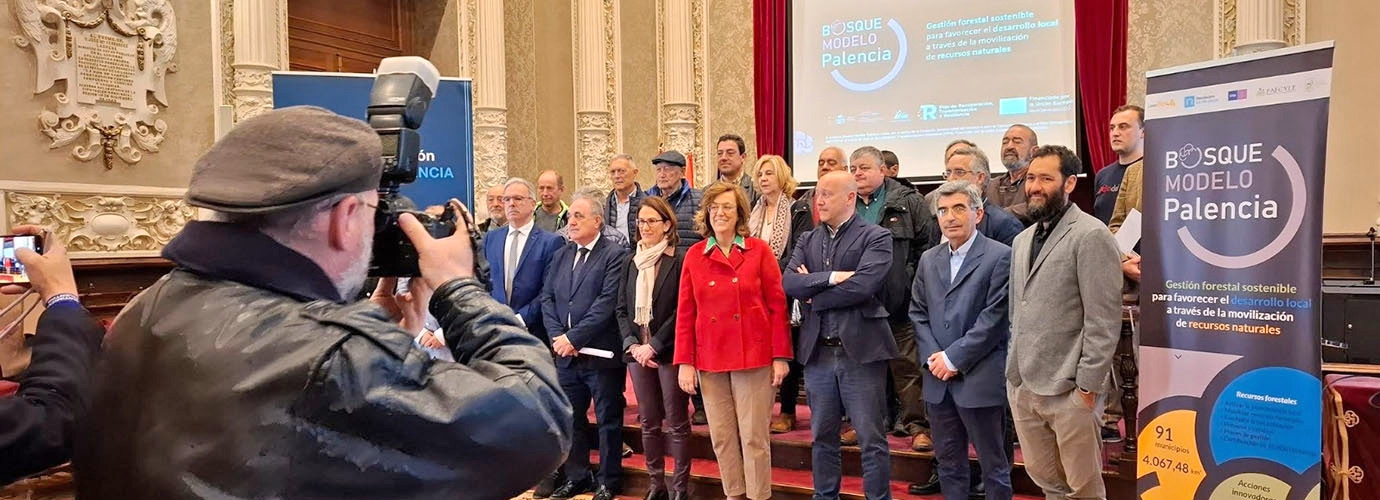The headquarters of the Provincial Council of Palencia was the venue for the presentation to the city of the start of the Palencia Model Forest project, a project promoted by five national entities under the coordination of the Provincial Council of Palencia, whose objective is to relaunch the already established Palencia Model Forest platform to reactivate economic and social revitalisation initiatives based on the use and optimisation of the forest resources of the demarcated area. The project is financed by the Biodiversity Foundation, which depends on the Ministry of Ecological Transition and Democratic Challenge.
The press conference was attended by María Jesús Rodríguez de Sancho, Director General of Biodiversity, Forests and Desertification of the Ministry for Ecological Transition and the Demographic Challenge (MITECO), as well as all the representatives of the project partners: Ángeles Armisén, President of the Provincial Council of Palencia, who welcomed and introduced the other project partners: Jesús Pestaña, President of FAFCYLE, Pablo Sabín, CEO of Cesefor, Felipe Bravo, Professor of Forest Planning at the University of Valladolid and Marta Salvador, Technical Director of the Forest Certification Association, PEFC.
The Palencia Model Forest includes an area of more than 400,000 hectares of rural and forest land in which 91 municipalities are located, which is more or less 42% of the surface area of the province. The initiative covers the area between the Montaña Palentina Natural Park and the Camino de Santiago, covering an area of 4,067.48 km2. The main population centres are Saldaña, Herrera de Pisuerga, Guardo, Cervera de Pisuerga, Aguilar de Campoo and Carrión de los Condes.

Actions to be implemented by the project partners
1. Analysis of municipal timber and non-timber forest resources and the bioeconomy of the territory with collection data. All these data will be collected in the web platform MONBIOFOR (developed by CESEFOR), free public access, which will be used as the bioeconomy portal of the BMP, collecting data from the 91 municipalities of the project, other public administrations, academic sources (UVa), technological (Cesefor), among others.
2. Analysis and feasibility for the implementation of Fire Prevention Plans and Close-to-Nature Forestry Management Plans. Inclusion of the gender perspective in the impact assessments determined in the plans.
3. Set up a network of public and private partners and management bodies with a gender approach.
4. Launch social intervention actions for the implementation of initiatives to mobilise forest resources with the aim of developing the municipal bioeconomy and taking into account the participation of women in the process.
5. The project will have its own communication channels through websites, social networks, events, workshops, etc. in order to reach target audiences.
Throughout the project, communication campaigns will be launched in order to raise awareness of the role of women in the forest industry and promote their participation. The entire project will be written in inclusive language.
Ecosystem benefits
1. Biodiversity and species protection: habitats for species, connectivity between habitats.
2. Climate change adaptation and mitigation: increased resilience to climate change, water retention, carbon sequestration and storage.
3. Provisioning services: sustainable drainage systems, increased water infiltration, production of raw materials: timber and non-timber products, maintenance of soil fertility, soil development and nutrient cycling, prevention of soil erosion.
4. Cultural services: aesthetic appreciation of nature, clean air, ecotourism, positive impact on land value and ownership, local identity, opportunity for education, training and social interaction.
Partners and funding
The entities that are going to participate in the development of this project will be:
1. On the one hand, the Diputación de Palencia, is regional government and represents the local administration of the territory;
2. FAFCYLE is the Federation of Forestry Associations of Castilla y León and represents the small private landowners of the area included in the Model Forest;
3. PEFC is the largest certification association and will be in charge of ensuring the chain of custody by ensuring a production committed to the conservation of the environment;
4. The University of Valladolid, will provide technological innovations in the evaluation of forest resources;
5. Finally, CESEFOR, the Centre for Services, Forestry Promotion and Industry of Castilla y León, will be in charge of implementing management tools with the latest technologies to boost natural resources within the Model Forest, and of designing and creating a Future Plan to give continuity to the initiatives implemented in the Model Forest.





